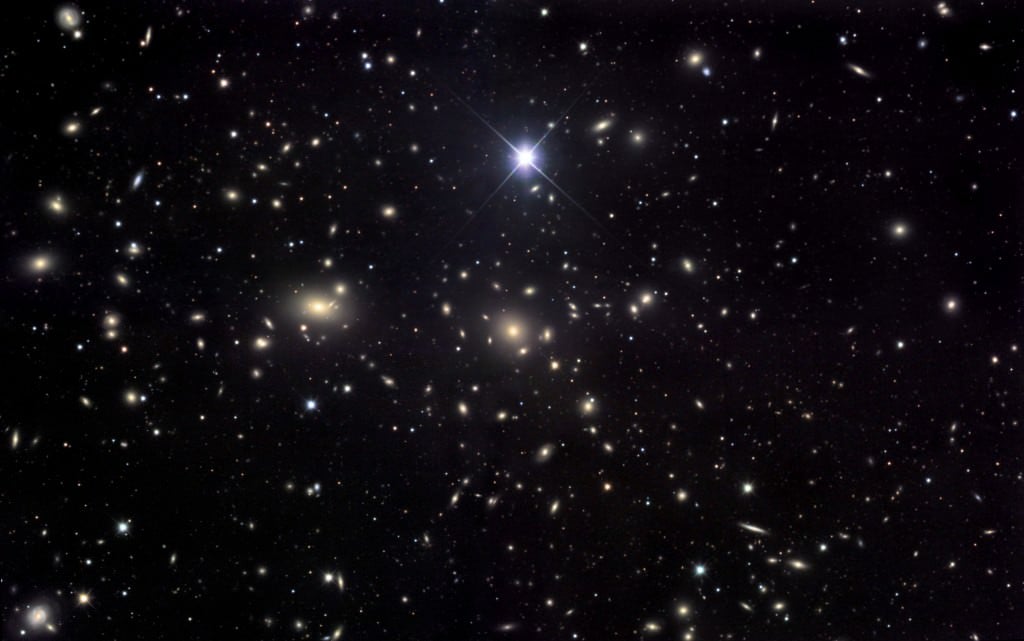It's a fact that many of us have churned out during public engagement events; that at least 50% of all stars are part of binary star systems. Some of them are simply stunning to look at, others present headaches with complex orbits in multiple star systems. Now it seems wide binary stars are starting to shake the foundations of physics as they question the very theory of gravity.
General relativity has been part of the foundation of modern physics since it was published by Albert Einstein in 1915. One of the challenges though is that, along with normal matter (known by its official name baryonic matter) general relativity is unable to explain the current theories of the evolution of the universe without dark matter. Alas dark matter has not been observed in any lab experiment or indeed directly in the sky.
The idea for dark matter was developed in the early 1930's to explain the movement of the galaxies in the Coma Cluster. It was Fritz Zwicky who coined the phrase dark matter in 1933 to explain the unseen matter that was driving the movement. Current theories suggest there is something like five times more dark matter in the Universe than there is normal matter but It's a type of matter that we know little about other than it doesn't interact with normal baryonic matter.
The standard model - that describes how the building blocks of matter interact - assumes that the current laws of gravity are all correct however a 'tweak' is required to explain certain observations and that tweak is called dark matter. In other words, we can see the effect of dark matter but we just haven't actually directly detected it yet. In a paper published by J. W. Moffat, there is a bold suggestion that maybe it's the gravitational model that is incorrect.
Enter MOND - 'Modified Newtonian Dynamics' - which proposes an adjustment to Newton's second law (nicely encapsulated in the formula that force equals mass multiplied by acceleration) to explain the movement of galaxies without dark matter. The theory, proposed by M. Milgrom in 1983 suggests that the gravitational force exerted upon a star in the outer reaches of a galaxy was proportional to the square of its centripetal acceleration (instead of the centripetal acceleration itself). Remember the existing models do not explain this without inserting dark matter which we have yet to discover.
The paper by Moffat suggests that they should be able to detect the changes proposed by MOND but in applying the formulas correctly the galaxy constrains must be significantly affected. Wide binary data from Gaia (the Global Astrometric Interferometer) seems to conclude that any modified gravity theory must reliy upon scale and length rather than acceleration. If this continues to be the case for future observations then it may well mark the demise of the MOND model for good.
 Universe Today
Universe Today

